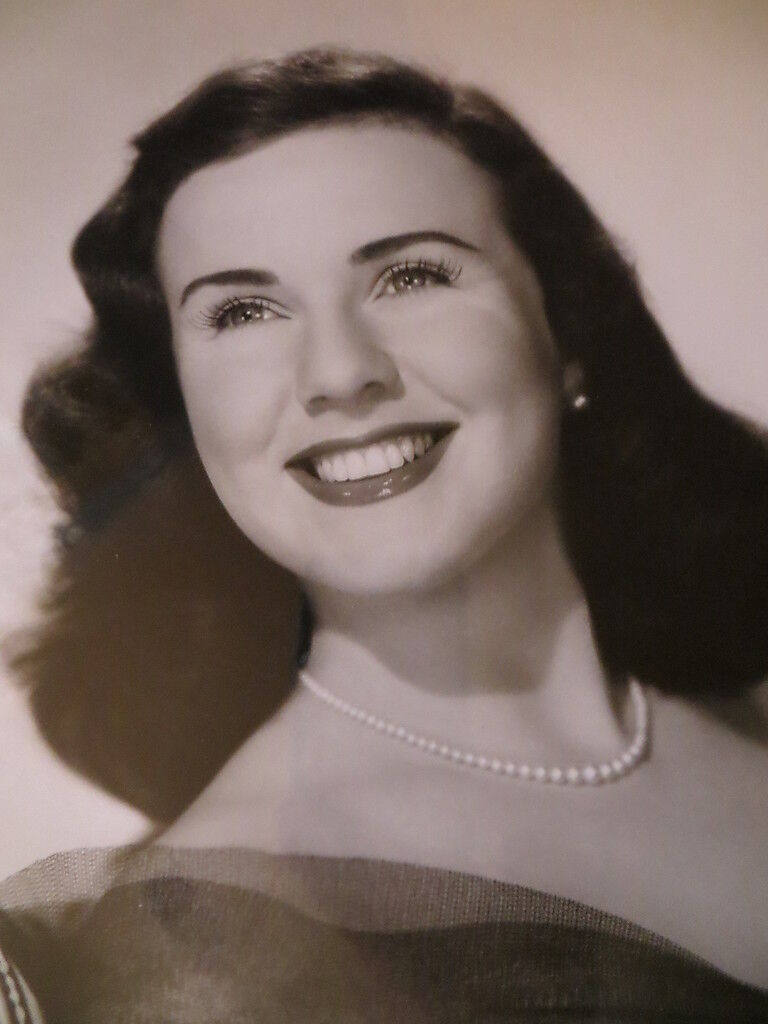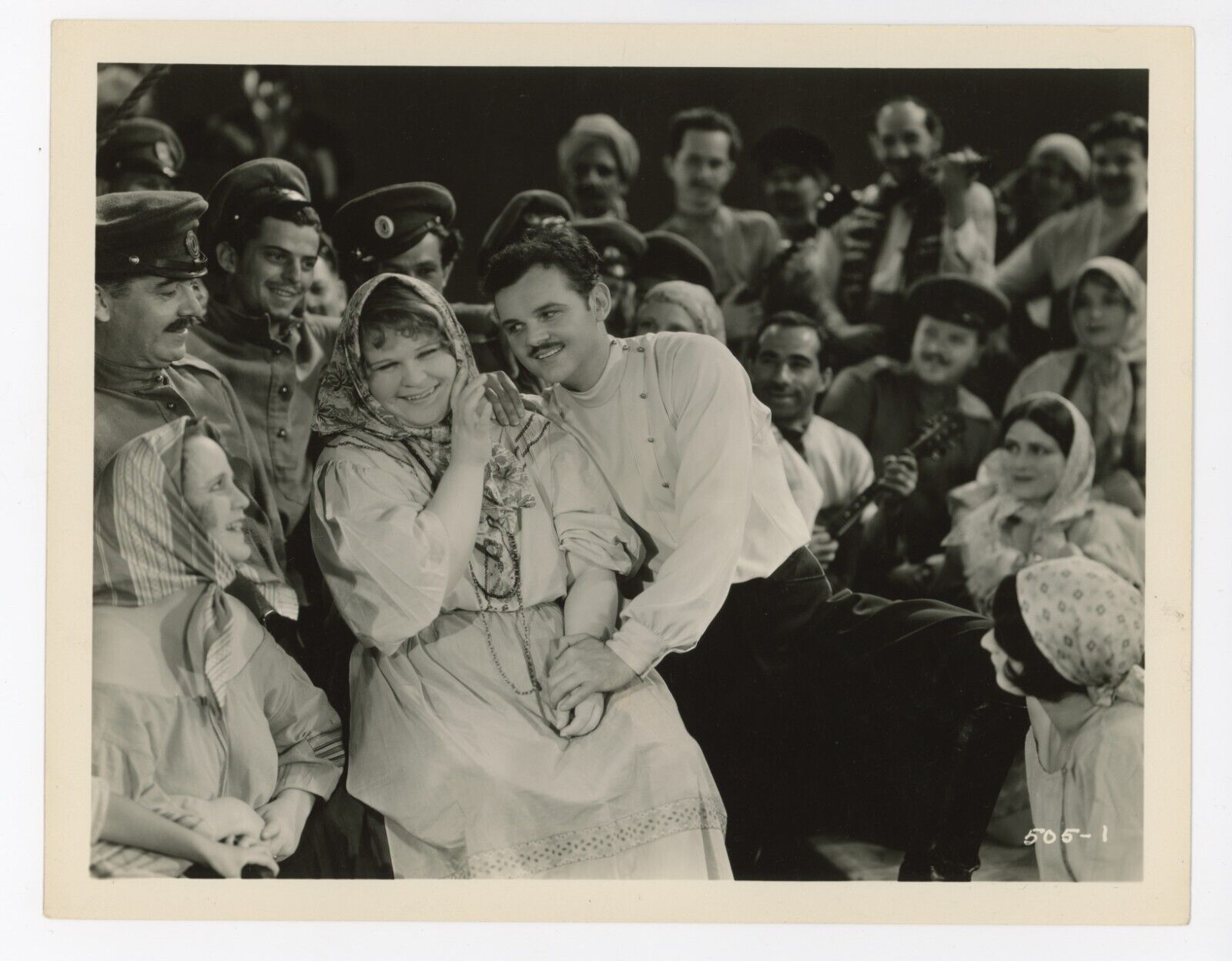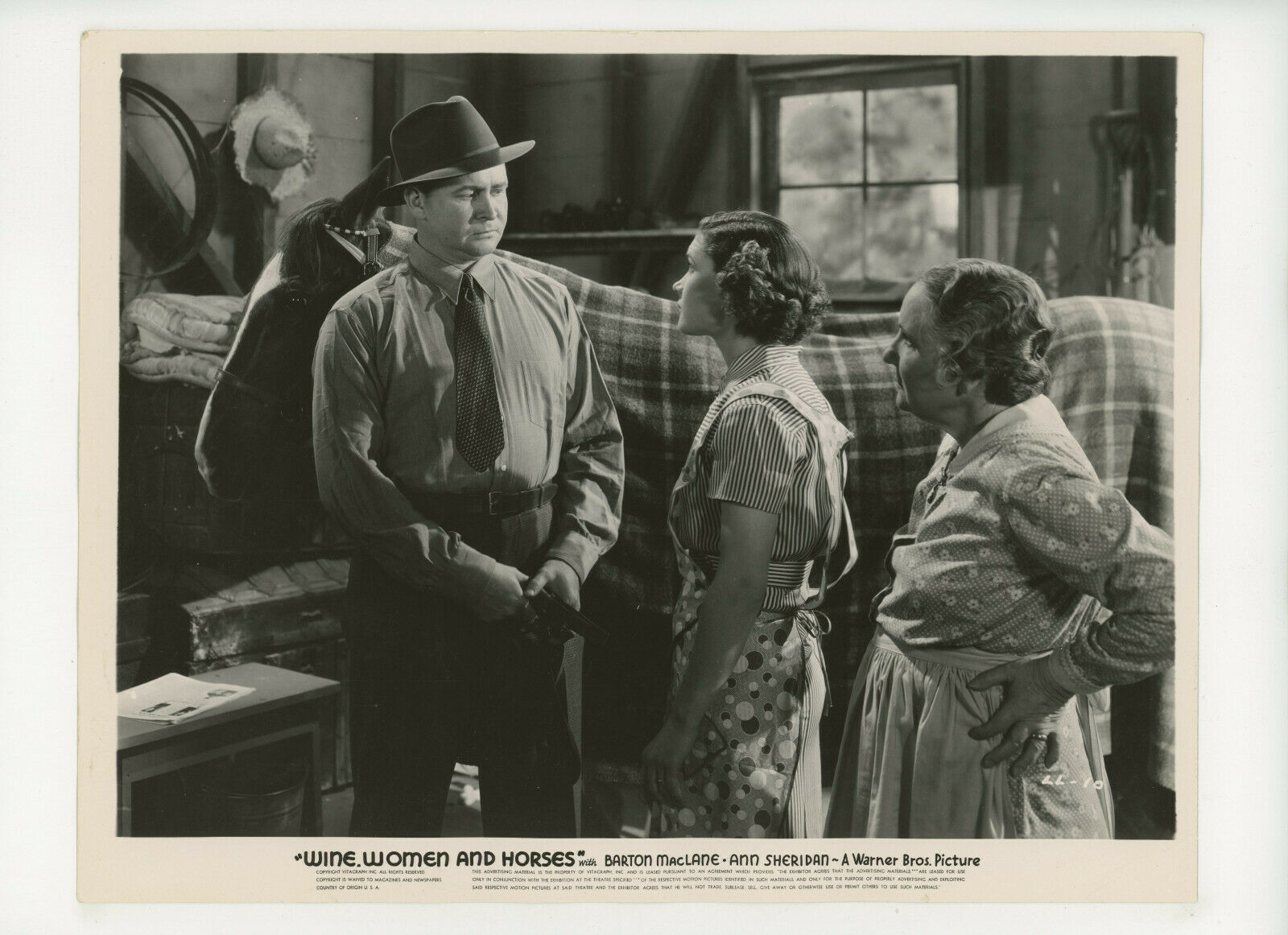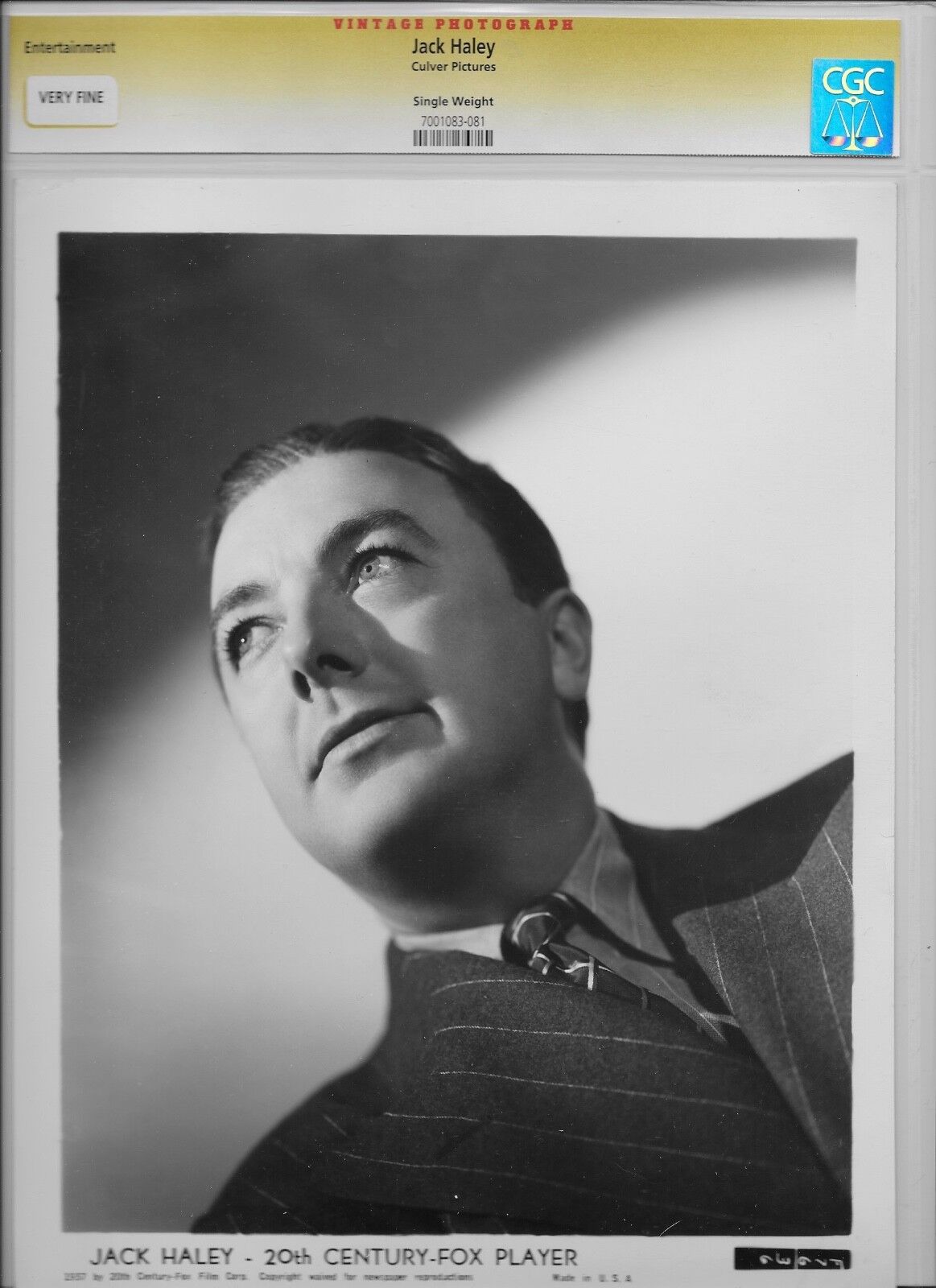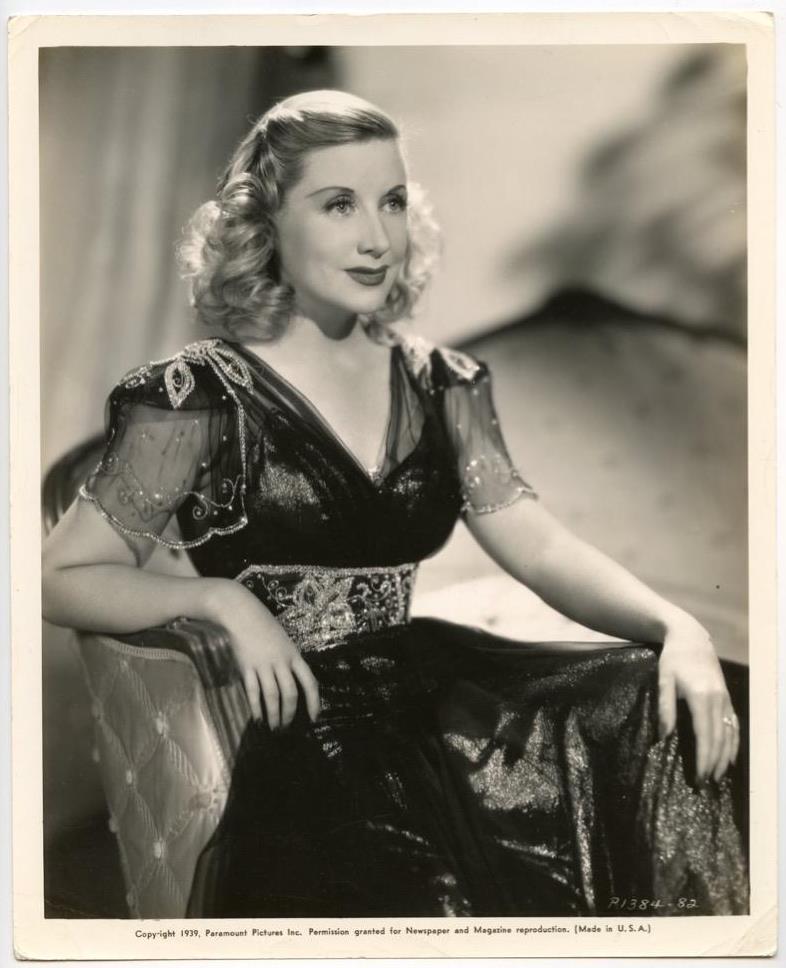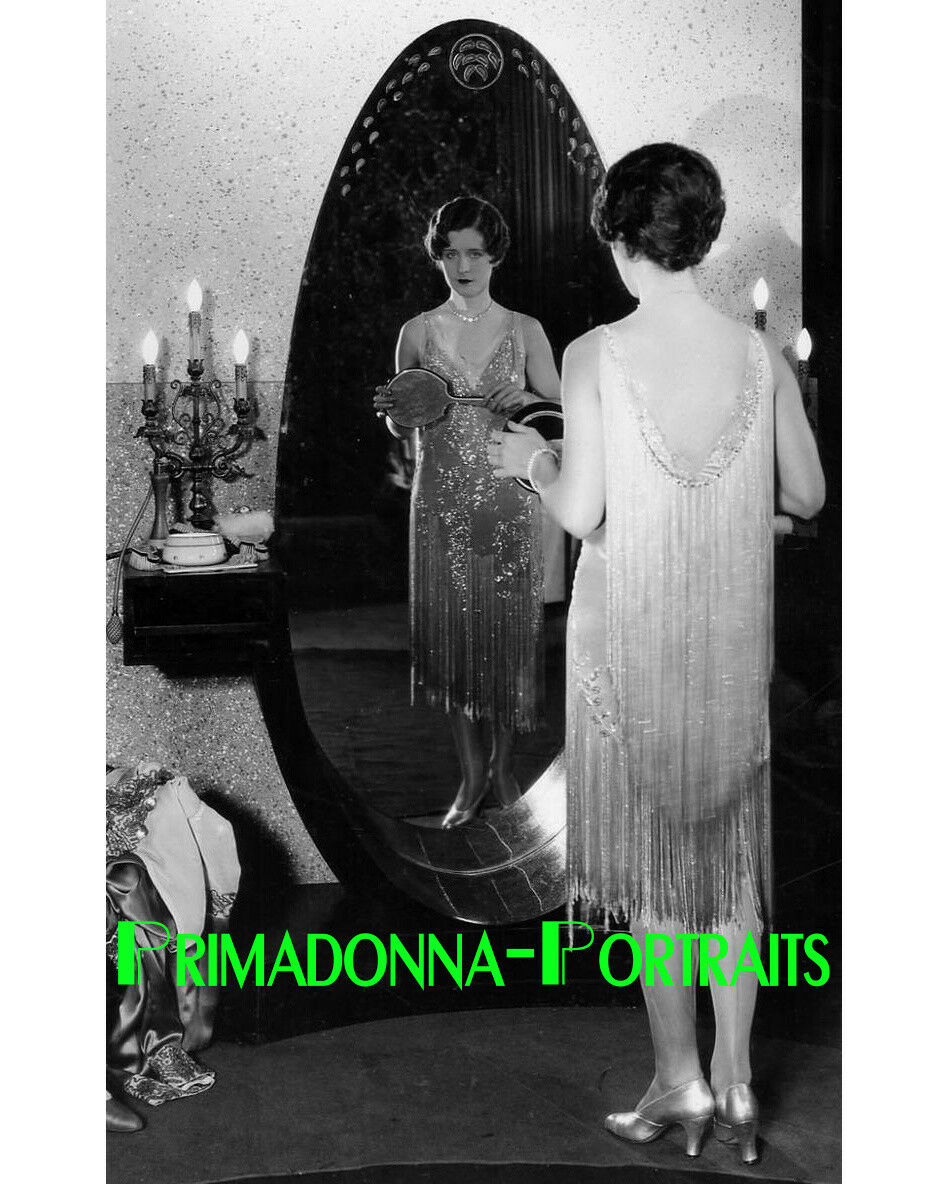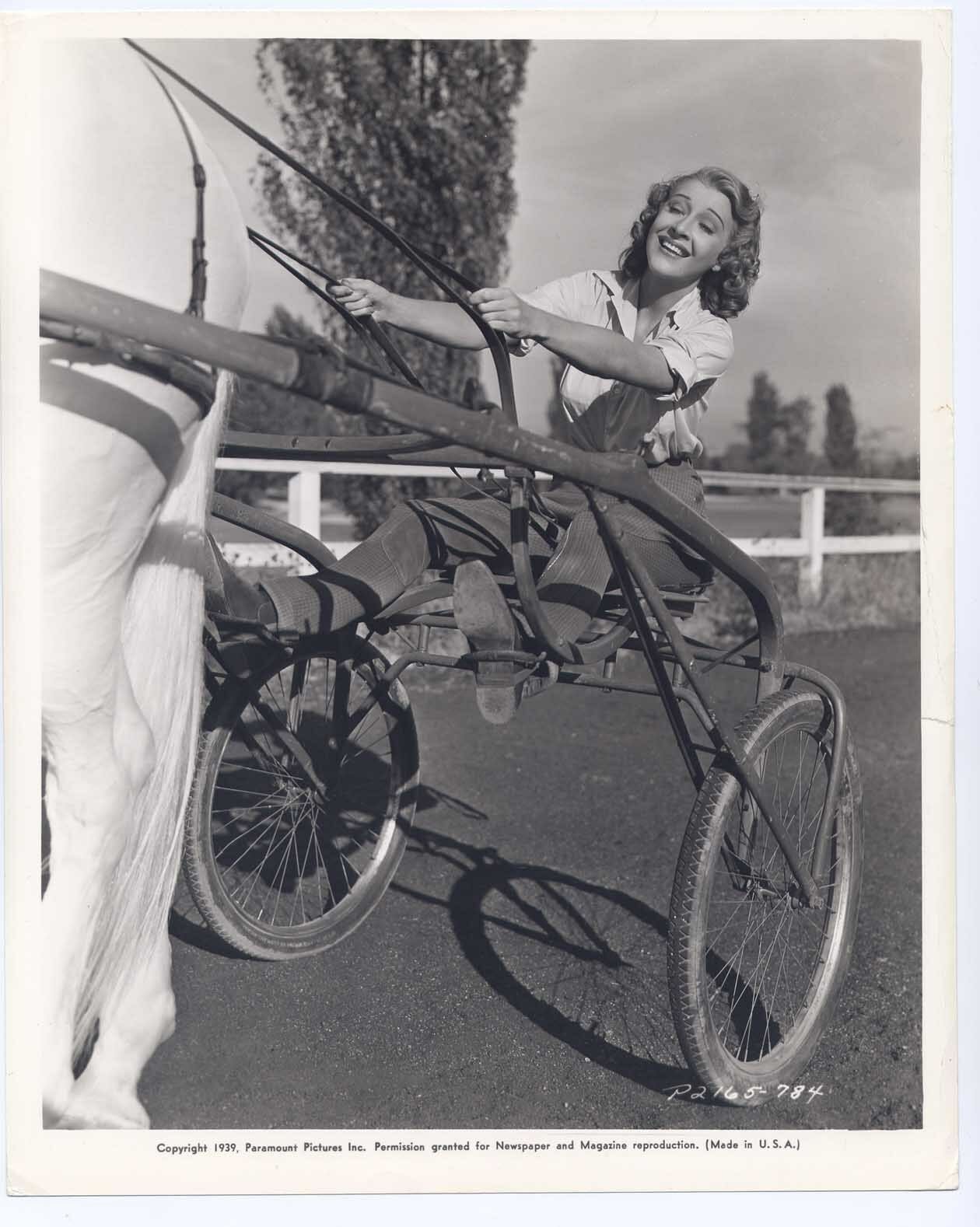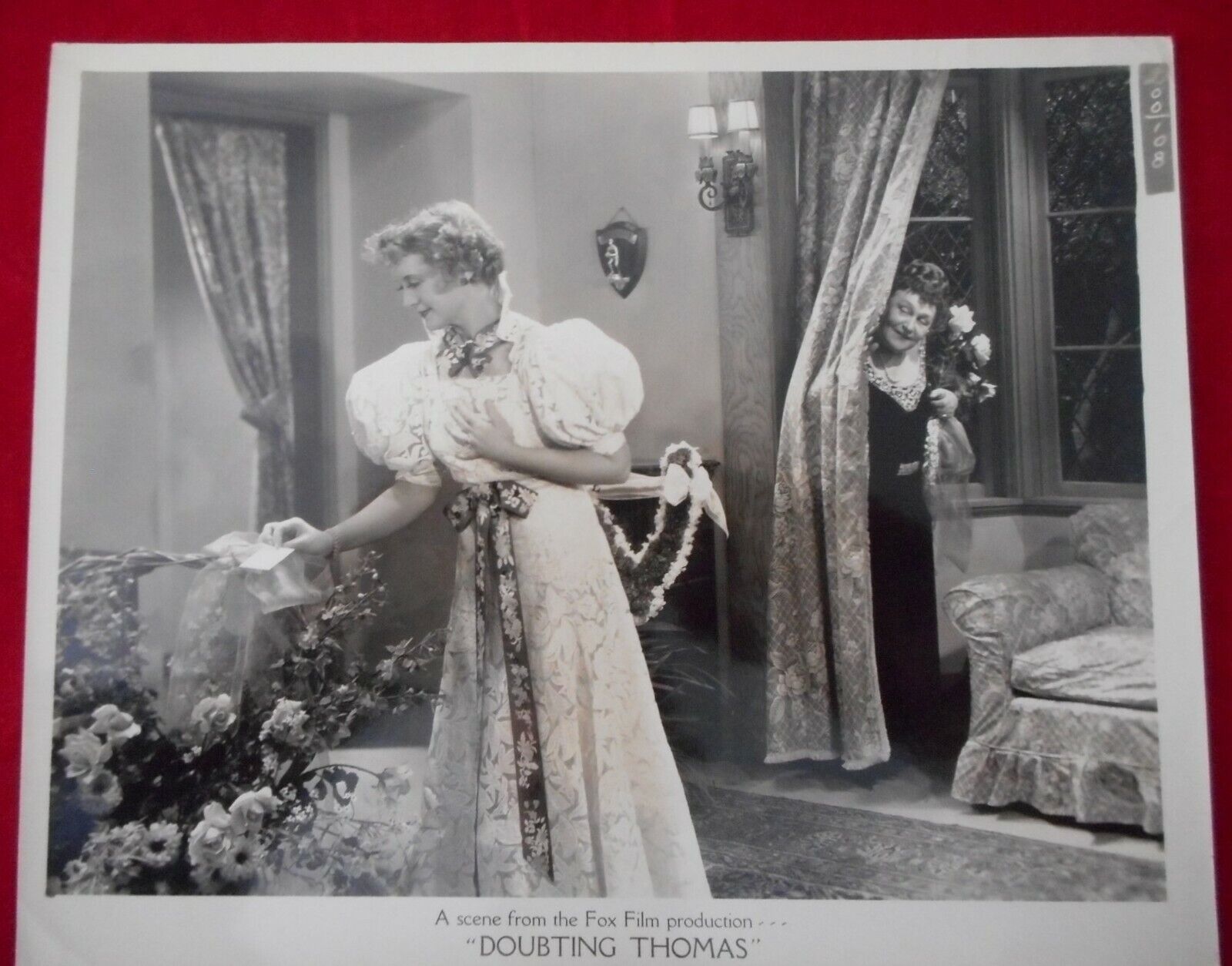-40%
LUISE RAINER 1930s OVERSIZE VINTAGE PHOTOGRAPH BY GEORGE HURRELL HER COLLECTION
$ 3.41
- Description
- Size Guide
Description
LUISE RAINER 1930s OVERSIZE VINTAGE PHOTOGRAPH BY GEORGE HURRELL HER COLLECTIONPROVENANCE:
From the personal collection of Luise Rainer purchased from Juliens Auction when her estate sold her entire collection.
DESCRIPTION:
EXTREMELY RARE - HIGHLY RECOMMENDED!
Original vintage 1930s gelatin silver matte double-weight 10" x 13" photograph of actress
LUISE RAINER
photographed by renowned Hollywood portrait photographer,
GEORGE HURRELL
, with handwritten sequence number
17
in pencil, photographer and studio credit ink stamp on the verso
.
-
SIZE:
10" X 13"
-
TONE:
B&W
- FINISH:
matte
- OTHER:
double-weight paper stock
--------------------------------------------------------------------------------------------------------------------------------------------
SHIPPING TERMS
- I ship all items using, what I call, triple protection packing. The photos are inserted into a display bag with a white board, then packed in between two thick packaging boards and lastly wrapped with plastic film for weather protection before being placed into the shipping envelope.
- The shipping cost for U.S. shipments includes USPS "Delivery Confirmation" tracking.
- Combined Shipping Discounts: If you purchase more than one item within a two week period that will be shipped together just add .00 to the base shipping cost. This will cover any additional quantity of a similar item purchased. If you purchase different types of items (i.e. clothes and photos) please contact me for the lowest possible shipping discount. Please wait for me to issue the invoice with the reduced shipping cost before making payment.
PAYMENT TERMS
- Please pay within three (3) days of purchase.
- I reserve the right to re-list the item(s) if payment is not received within seven (7) days.
- All sales taxes applicable to the City of Los Angeles, State of California and the 2019 Marketplace Sales Tax Law in other states shall be applied.
CUSTOMER SERVICE
I will respond to all inquiries within 24 hours.
------------------------------------------------------------------------
LUISE RAINER BIO
(born 12 January 1910) is a German film actress. Known as The "Viennese Teardrop", she is the first woman to win two Academy Awards, and the first person to win them consecutively. She was discovered by MGM talent scouts while acting on stage in Austria and Germany and after appearing in Austrian films.
Her training began in Germany from the age of 16 by leading stage director Max Reinhardt. After a few years, she became recognized as a "distinguished Berlin stage actress", acting with Reinhardt's Vienna theater ensemble. Critics "raved" at her stage and film acting quality, leading MGM to sign her to a three-year contract and bring her to Hollywood in 1935. A number of filmmakers anticipated she might become another Greta Garbo, MGM's leading female star.
Her first American role was in the film
Escapade
(1935), which was soon followed with a relatively small part in the musical biopic
The Great Ziegfeld
(1936). Despite her limited appearances in the film, she "so impressed audiences" that she won the Oscar for Best Actress. For her dramatic telephone scene in the film, she was later dubbed "the Viennese teardrop". In her next role, producer Irving Thalberg was convinced, despite the studio's disagreement, that she could play the part of a poor uncomely Chinese farm wife in
The Good Earth
, based on Pearl Buck's novel about hardship in China. The subdued character she played was such a dramatic contrast to her previous, vivacious character, that she won another Academy Award, even with Greta Garbo as one of the nominees.
However, she would later remark that by winning two consecutive Oscars, "nothing worse could have happened to me," as audience expectations from then on would be too high to fulfill. She was then given parts in a string of unimportant movies, leading MGM and Rainer to become disappointed, and she ended her brief three-year career in films, soon returning to Europe. Adding to her rapid decline, some feel, was the "poor career advice" given her by then husband, playwright Clifford Odets, along with the unexpected death, at age 37, of her producer, Irving Thalberg, whom she greatly admired. Some film historians consider her the "most extreme case of an Oscar victim in Hollywood mythology". She currently lives in London.
The daughter of Heinz Rainer and Emmy (née Koenigsberger), Luise was born in Düsseldorf, Germany and raised in Hamburg, Germany and Vienna, Austria. She once told a reporter: "I was born into a world of destruction. The Vienna of my childhood was one of starvation, poverty and revolution." Her father was a businessman who settled in Europe after spending most of his childhood in America, where he was sent at the age of 6 as an orphan. Her mother came from an upper-class German-Jewish family. A number of leading film references list her birthplace as Vienna, Austria.
Biographer Margaret Brenman-Gibson writes that Luise was a premature baby, born two months early. She also had two brothers. Rainer describes her father as being "possessive" and "tempestuous," but whose affections and concern centered on her. Luise seemed to him as "eternally absent-minded" and "very different." Rainer remembers his "tyrannical possessiveness," and was saddened to see her mother, "a beautiful pianist, and a woman of warmth and intelligence and deeply in love with her husband, suffering similarly".
Although generally shy at home, she was "immensely athletic" in school, becoming a champion runner and an "intrepid" mountain-climber, notes Brenman-Gibson. In addition to expending her energy in athletics, Rainer stated, "I became an actress only because I had quickly to find some vent for the emotion that inside of me went around and around, never stopping." It was her father's wish that she attend a good finishing school and "marry the right man," she remembers. However, her "rebellious" nature made her appear to be more a "tomboy," while at the same time, "happy to be alone", she feared she was "developing her mother's inferiority complex".
She was only six when she decided to be part of the entertainment world, and recalls being inspired by watching a circus act: "I thought that a man on the wire was marvelous, in his spangles and tights. I wanted to run away and marry him but I never had an opportunity. I am sure, though, that the experience first disclosed to me the entertainment world. For years I longed to be able to walk on a tight wire, too."
At age 16 she chose to follow her dream to become an actress. Under the pretext of visiting her mother, Rainer instead traveled to Düsseldorf and registered at the Dumont Theater, having prearranged an audition the same day. She later began studying acting with Max Reinhardt, and by the time she was 18 there was already an "army of critics" who felt that she had "unusual" talent for a young actress. She became a "distinguished Berlin stage actress" acting with Reinhardt's Vienna theater ensemble. She made her first appearance on the stage at the Dumont Theater in 1928, followed by appearances at various theaters in Jacques Deval's play
Mademoiselle
, Kingsley's
Men in White
, George Bernard Shaw's
Saint Joan
,
Measure for Measure
, and Pirandello's
Six Characters in Search of an Author
.
She later appeared in several German language films before being discovered in 1934 by MGM talent scout Phil Berg while performing in
Six Characters in Search of an Author
, who felt that she might appeal to the same audience as Greta Garbo, then one of their most successful performers. Initially, Rainer had no interest in a film career, saying in a 1935 interview: "I never wanted to film. I was only for the theater. Then I saw
A Farewell to Arms
and right away I wanted to film. It was so beautiful."
Rainer summered with her husband Clifford Odets, Harold Clurman and Elia Kazan, among others, at the Pine Brook Country ClubGroup Theatre (New York) located in the countryside of Nichols, Connecticut which was the summer rehearsal headquarters of the during the 1930s and 1940s.
After doing a few films in Austria, for which "critics raved", she was offered a three-year contract with MGM and came to Hollywood in 1935 as a hopeful new star. According to biographer Charles Higham, both MGM studio head Louis B. Mayer and story editor Samuel Marx had seen footage of Rainer before she came to Hollywood, and both felt she had the looks, charm, and especially a "certain tender vulnerability" that Mayer admired in female stars. Because of her weak command of English, Mayer assigned actress Constance Collier to train her in correct speech and dramatic modulation, and Rainer's speaking skills improved rapidly.
Upon arriving in Hollywood, Rainer spent eight weeks at the studio without being offered a job. Her first film role in Hollywood was in
Escapade
(1935), which was a remake of one of her Austrian films. She received the part after Myrna Loy gave up the role. By the time Rainer was cast, half of the film was already shot. During the film's first preview, Rainer ran out of the cinema and later said about the event: "On the screen, I looked so big and full of face, it was awful." Following the film's release, Rainer received a lot of publicity and was often acclaimed the 'Elisabeth Bergner of light comedy' by the press. She was hailed as 'Hollywood's next sensation' and had to do several interviews. From the beginning of her Hollywood career, she stated she did not like the stardom or giving interviews, explaining: "Stars are not important, only what they do as a part of their work is important. Artists need quiet in which to grow. It seems Hollywood does not like to give them this quiet. Stardom is bad because Hollywood makes too much of it, there is too much 'bowing down' before stars. Stardom is weight pressing down over the head ? and one must grow upward or not at all."
Rainer was next assigned to play the real-life character Anna Held, a small part in the musical biography
The Great Ziegfeld
, which she obtained in August 1935. The film reunited her with actor William Powell, with whom she also co-starred in
Escapade
. Powell was very impressed with Rainer and previously arranged her equal billing for
Escapade
. He described his impressions of her: "She is one of the most natural persons I have ever known. Moreover, she is generous, patient and possesses a magnificent sense of humor. She is an extremely sensitive organism and has a great comprehension of human nature. She has judgment and an abiding understanding which make it possible for her to portray human emotion poignantly and truly. Definitely a creative artist, she comprehends life and its significance. Everything she does has been subjected to painstaking analysis. She thinks over every shade of emotion to make it ring true. In Europe she is a great stage star. She deserves to be a star. Unmistakably she had all the qualities."
Higham notes that the film's producer, Irving Thalberg, decided that "only she could play" the part. However, Rainer states that Mayer "did not want me to do the film, and said 'Anna Held is out of it before the film is halfway through. You are a star now and can't do it!'"Shortly after shooting began in late 1935, doubts of Rainer's ability to pull off the Anna Held role emerged in the press. She was criticized for not resembling the Polish-born stage performer, on which Leonard commented that any resemblance would have made the film less believable due to the expected constant comparison. The director admitted that "the main reason" Rainer was cast was her eyes, claiming that they "are just as large, just as lustrous, and contain the same tantalizing quality of pseudo naughtiness."
As Thalberg expected, she nonetheless succeeded in acting the role, which required "coquettishness, wide-eyed charm, and vulnerability." Despite her limited appearances in the film, biographer Charles Affron writes that Rainer "so impressed audiences with one highly emotional scene" that she won an Academy Award for Best Actress. In the scene, her character as Anna Held is speaking to her ex-husband Florenz Ziegfeld over the telephone, attempting to congratulate him on his new marriage: "The camera records her agitation; Ziegfeld hears a voice that hovers between false gaiety and despair; when she hangs up she dissolves into tears."
On the evening of the Academy Award ceremonies, Rainer remained at home, not expecting to win any award. When Mayer then learned she won the award, he sent MGM publicity head Howard Strickling racing to her home to get her. When she finally arrived, master of ceremonies George Jessel, during the commotion, made the mistake of introducing Rainer, which Bette Davis had been scheduled to do. She was also awarded the New York Film Critics' Award for the role.
Her next film was
The Good Earth
(1937), where she co-starred with Paul Muni. She was first rated the most likely choice for the female lead in the film adaption back in September 1935, and was cast two months later in November. The role was completely opposite her Anna Held character, where she now portrayed a humble Chinese peasant. For the part, she acted utterly subservient to her husband, perpetually huddled in submission, and barely spoke a word of dialogue during the entire film. The extreme contrast in the role with her last one partly contributed to her winning another Oscar for Best Actress. She became the first actress to win two consecutive Oscars, a feat not matched until Katharine Hepburn's two Oscar wins thirty years later. Film historian Andrew Sarris states that her "comparative muteness was reckoned as an astounding tour de force after her hysterically chattering telephone scene in
The Great Ziegfeld
".
Rainer later recalled that studio head Louis B. Mayer did not approve of the film being produced or her part in it: "He was horrified at Irving Thalberg's insistence for me to play O-lan, the poor uncomely little Chinese peasant. I myself, with the meager dialogue given to me, feared to be a hilarious bore." Rainer remembers Mayer's comments to Thalberg: "She has to be a dismal-looking slave and grow old; but Luise is a young girl; we just have made her glamorous ? what are you doing?" She considers the part as one of the "greatest achievements" in her career, stating that she was allowed to express "realism," even refusing to "wear the rubber mask Chinese look suggested by the make-up department", allowing her to act "genuine, honest, and down-to-earth".
There were a number of serious problems during production, however. George W. Hill, a leading director at the time, was chosen to direct the film, and spent several months in China filming backgrounds and atmospheric scenes of farmlands around the Great Wall and in Peking. Soon after he returned, Hill committed suicide, and the film was postponed until Sidney Franklin took over directing.
Then, before the film was completed, the film's producer, Irving Thalberg, died suddenly at the age of 37. Rainer commented years later, "His dying was a terrible shock to us. He was young and ever so able. Had it not been that he died, I think I may have stayed much longer in films."
Rainer described winning the two Oscars as the "worst possible thing" to befall her career. In a 1938 interview, Rainer exclaimed that being awarded twice made her "work all the harder now to prove the Academy was right." The critic James Agate admired Rainer's performance in
The Good Earth
and described it as "an exquisite rendering", however she was criticised in reviews by
Picturegoer
. Max Breen was among those critics indignant that Greta Garbo's performance in
Camille
had been overlooked in favor of Rainer.
In late 1936, MGM conceived a script called
Maiden Voyage
especially for Rainer. The project was shelved and eventually released as
Bridal Suite
in 1939, starring Annabella as 'Luise'. Another 1936 film project never realized that Rainer was involved in was
Adventure for Three
, which would have co-starred William Powell. In 1938, she played Johann Strauss's long-suffering wife Poldi in the successful MGM musical biopic
The Great Waltz
, her last hit.
She made four other films for MGM,
The Emperor's Candlesticks
(1937),
Big City
(1937) with Spencer Tracy,
The Toy Wife
(1938) and
Dramatic School
(1938), but all were ill-advised and not well received, though Rainer continued to receive praise.
The Emperor's Candlesticks
, in which Rainer was cast in November 1936, reunited Rainer with Powell for the final time. For the film, she wore a red wig and received costumes designed by Adrian, who claimed that Rainer, by the end of 1937, would become one of most influential people in fashion of Hollywood. On set, she received star treatment, having her own dressing room, diction teacher, secretary, wardrobe woman, hairdresser and make-up artist.
The Emperor's Candlesticks
was Rainer's first film for which she received criticism, it being claimed that she did not improve in her acting technique.
Even though reviews were favorable of Rainer's performance in
Big City
, reviewers agreed that the actress was miscast in a 'modern role' and looked "too exotic" as Tracy's wife. Despite the criticism and announcements of leaving Hollywood, Rainer renewed her contract for seven years shortly after the film's release.
Most critics agreed Rainer was "at her most appealing" in
The Toy Wife
, in which she was cast in April 1938. The final MGM Rainer made was
Dramatic School
, in which she was cast in May 1938.
Rainer refused to be stereotyped or to knuckle under to the studio system and studio head Mayer was unsympathetic to her demands for serious roles. Furthermore, she began to fight for a higher salary and she was reported as being difficult and temperamental. Thereby, she missed out on several roles, including the female lead in the Edward G. Robinson gangster film
The Last Gangster
(1937), in which another Viennese actress, Rose Stradner, replaced her. Speaking of Mayer decades later, Rainer recalled, "He said, 'We made you and we are going to destroy you.' Well, he tried his best."
Rainer made her final film appearance for MGM in 1938 and abandoned the film industry. In a 1983 interview, the actress told she went to Louis B. Mayer's office and said to him: "Mr Mayer, I must stop making films. My source has dried up. I work from the inside out, and there is nothing inside to give." Following the conversation she traveled to Europe, where she helped children who were victims of the Spanish Civil War. Nevertheless, she was not released from her contract and by 1940, she was still bound to make one more film for the studio. Disenchanted with Hollywood, where she later said it was impossible to have an intellectual conversation, she moved to New York City in 1940 to live with her husband, playwright Clifford Odets, whom she had married in 1937. Rainer and Odets were divorced three years later. Rainer had never made it a secret that she felt terrible as Odets' wife, and exclaimed in a 1938 interview: "All the acting I've done on the stage or screen has been nothing compared to the acting I did in New York, when I tried to make everyone think I was happy ? and my heart was breaking." She filed for divorce in mid-1938, but proceedings were delayed "to next October" when Odets fled to England. The divorce was finalized on May 14, 1940. Rainer and Odets summered at Pine Brook Country Club in Nichols, Connecticut, where numerous other members of the Group Theatre (New York) also spent their summers, both acting and writing.
Despite the negativity, Rainer was one of the actresses considered for the role of Scarlett O'Hara in
Gone With the Wind
(1939), but the idea was not well-received, and she was not given a screen test. In a later interview, Rainer commented on her disappearance in the movie industry by saying: "I was very young. There were a lot of things I was unprepared for. I was too honest, I talked serious instead of with my eyelashes and Hollywood thought I was cuckoo. I worked in seven big pictures in three years. I have to be inspired to give a good performance. I complained to a studio executive that the source was dried up. The executive told me, 'Why worry about the source. Let the director worry about that.' I didn't run away from anybody in Hollywood. I ran away from myself."
While in Europe, Rainer studied medicine and explained she loved being accepted as "just another student", rather than as the screen actress. Meanwhile, she also returned to the stage and made her first appearance at the Palace Theatre, Manchester on May 1, 1939 as Françoise in Jacques Deval's play
Behold the Bride
, and her first London appearance at the Shaftesbury Theatre on May 23, 1939 in the same part. Returning to America, she made her first appearance on the New York stage at the Music Box Theatre in May 1942 as Miss Thing in J. M. Barrie's
A Kiss for Cinderella
.
In World War II, she signed a visa affidavit to get Bertolt Brecht out of Nazi Germany because she "loved his poetry". In return, he wrote the role of Grusha Vashnadze in his 1944 play
The Caucasian Chalk Circle
for Rainer. However they had a disagreement and she never played it.
She made one more film appearance in
Hostages
in 1943 and abandoned film making in 1944 after marrying publisher Robert Knittel. She initially did not plan on returning to the screen, but explained her comeback in 1943 by saying: "All the professor and the other students cared about was whether I could answer the questions, not whether I could come to class looking glamorous. But after that brief return to the stage, I began to realize that all the doors which had been opened to me in Europe, and all the work I had been able to accomplish for refugee children, was due to the fact that people knew me from my screen work. I began to feel a sense of responsibility to a job which I had started and never finished. When I also felt, after that experience at Dennis, that perhaps I did have talent after all, and that my too-sudden stardom was not just a matter of happy accident, I decided to go back."
When Rainer returned to Hollywood, her contract at MGM had long expired and she had no agent. David Rose, head of Paramount Pictures, offered her to star in an English film shot on location, but the war conditions prevented her from accepting the role. Instead, Rose suggested her in 1942 to take a screen test for the lead role in
For Whom the Bell Tolls
(1943), but Ingrid Bergman was cast. Rainer eventually settled on a role in the small film
Hostages
(1943) and told the press about the role: "It's certainly not an Academy Award part, and thank goodness, my bosses don't expect me to win an award with it. [..] No, this is something unspectacular but I hope, a step back in the right direction."
Rainer had become an American citizen in the 1940s, but she and Knittel had lived in the UK and Switzerland for most of their marriage. Robert Knitell died in 1989. They had one daughter, Francesca Knittel, now known as Francesca Knittel-Bowyer. Rainer now lives in Belgrave Square, London, in an apartment in the same building once inhabited by fellow two-time Oscar winner Vivien Leigh.
Federico Fellini enticed her to play the cameo role of the writer Dolores in his 1960 Oscar-winning classic
La Dolce Vita
, to the point of her travelling to the Rome location. She quit the production prior to shooting, a fact attributed either to her resistance to an unwanted sex scene, or to her insistence on overseeing her own dialogue. The role was cut from the eventual screenplay.
Rainer made sporadic television and stage appearances following her and her husband's move to Britain, appearing in an episode of the World War II television series
Combat!
in 1965. She took a dual role in a 1983 episode of
The Love Boat
. For the latter she received a standing ovation from the crew. She appeared in
The Gambler
(1997) in a small role, marking her film comeback at the age of 86. She made appearances at the 1998 and 2003 Academy Awards ceremonies as part of special retrospective tributes to past Oscar winners.
On 12 January 2010, Rainer celebrated her centenary in London. Actor Sir Ian McKellen was one of her guests. During that month, she was present at the British Film Institute tribute to her at the National Film Theatre, where she was interviewed by Richard Stirling
before screenings of
The Good Earth
and
The Great Waltz
. She also appeared onstage at the National Theatre, where she was interviewed by Sir Christopher Frayling. In April 2010 she returned to Hollywood to present a TCM festival screening of
The Good Earth
.
Rainer has a star on the Hollywood Walk of Fame at 6300 Hollywood Boulevard.
Filmography
Year
Title
Role
Notes
1932
Sehnsucht 202
Kitty
1932
Madame hat Besuch
1933
Heut' kommt's drauf an
Marita Costa
1935
Escapade
Leopoldine Dur
1936
Great Ziegfeld, The
The Great Ziegfeld
Anna Held
Academy Award for Best Actress
1937
Good Earth, The
The Good Earth
O-Lan
Academy Award for Best Actress
1937
Emperor's Candlesticks, The
The Emperor's Candlesticks
Countess Olga Mironova
1937
Big City
Anna Benton
1938
Toy Wife, The
The Toy Wife
Gilberte 'Frou Frou' Brigard
1938
Great Waltz, The
The Great Waltz
Poldi Vogelhuber
1938
Dramatic School
Louise Mauban
1943
Hostages
Milada Pressinger
1997
Gambler, The
The Gambler
Grandmother
(courtesy of wikipedia)
See Above
See Above
inkfrog terapeak


